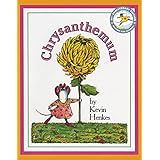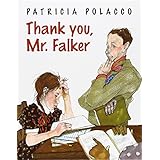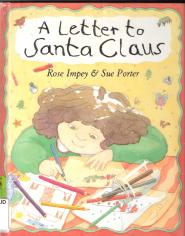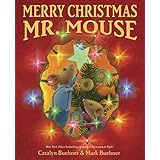It’s kind of hard at this point to know just what children’s literature of the 1990s will have staying power in the distant future, so I’m choosing a few books and authors who had a real impact on the decade or that had a strong body of their work published in the 1990s and which I know kids are still reading today. It’s hard for me to realize that many of these books were written over twenty years ago because, well, the 1990s doesn’t seem so far in the past to me! It may have become clear to readers by now that I am particularly fond of historical fiction and fantasy titles, but I have a few picture books and realistic fiction titles included in my list, and if you notice any glaring omissions from the decade, chime in below.
[1990-to-1999-book-list]
A sampling of some significant events in history for the decade (including a number of which I actually remember!):
1990–Nelson Mandela freed
1991–Collapse of the Soviet Union
1992–Los Angeles riots after Rodney King verdict
1993–World Trade Center bombed
1994–Nelson Mandela elected president of South Africa
1995–eBay founded
1996–Unabomber arrested
1997–Pathfinder sends images of Mars
1998–U.S. President Bill Clinton impeached
1999–Euro becomes new European currency
Newbery Medals for the decade are:
1990–Number the Stars, by Lois Lowry
1991–Maniac Magee, by Jerry Spinelli
1992–Shiloh, by Phyllis Reynolds Naylor
1993–Missing May, by Cynthia Rylant
1994–The Giver, by Lois Lowry
1995–Walk Two Moons, by Sharon Creech
1996–The Midwife’s Apprentice, by Karen Cushman
1997–The View From Saturday, by E.L. Konigsburg
1998–Out of the Dust, by Karen Hesse
1999–Holes, by Louis Sachar
Caldecotts for the decade are:
1990–Lon Po Po: A Red-Riding Hood Story from China, by Ed Young
1991–Black and White, by David Macaulay
1992–Tuesday, by David Weisner
1993–Mirette on the High Wire, by Emily Arnold McCully
1994–Grandfather’s Journey, by Allen Say
1995–Smoky Night, by Eve Bunting, illustrated by David Diaz
1996–Officer Buckle and Gloria, by Peggy Rathmann
1997–Golum, by David Wisniewski
1998–Rapunzel, by David O. Zelinsky
1999–Snowflake Bentley, by Jacqueline Briggs Martin, illustrated by Mary Azarian
 Andrew Clements: I don’t know if I’ve expressed how much I love Andrew Clements’ books (I have, a few times), but I do very much love Andrew Clements’ books! Suitable for readers as young as third or fourth grade, they usually have a school-based setting, have a varied cast of characters and conflicts, and you never have to worry that the content will be inappropriate for young readers despite some of the issues they tackle. My first and always favorite is Frindle (1996), his first novel for children, but Extra Credit (2009) and About Average (2012) are up there, too, for different reasons. (I consider him the Joan Bauer of children’s literature…and Joan Bauer is the Andrew Clements of YA literature–always appropriate to recommend!)
Andrew Clements: I don’t know if I’ve expressed how much I love Andrew Clements’ books (I have, a few times), but I do very much love Andrew Clements’ books! Suitable for readers as young as third or fourth grade, they usually have a school-based setting, have a varied cast of characters and conflicts, and you never have to worry that the content will be inappropriate for young readers despite some of the issues they tackle. My first and always favorite is Frindle (1996), his first novel for children, but Extra Credit (2009) and About Average (2012) are up there, too, for different reasons. (I consider him the Joan Bauer of children’s literature…and Joan Bauer is the Andrew Clements of YA literature–always appropriate to recommend!)
Sharon Creech: Sharon Creech doesn’t write series books, but my classroom library when I taught fifth grade had quite a long Creech segment anyway! My personal favorites are Love That Dog (2001) and Granny Torrelli Makes Soup (2003). Her characters are also real and relatable, and she doesn’t shy away from hard topics. I would recommend most of her works for fifth grade and up, actually, because of the topics and age of the protagonists, but my two favorites can work for slightly younger students. Walk Two Moons (1994), the story of a young teenage girl who is dealing with her grief over the loss of her mother in her own particular way, won the Newbery in 1995. Absolutely Normal Chaos (1990), another book for upper elementary to middle school readers, was published first in the UK and again in the US after the success of Walk Two Moons.
doesn’t write series books, but my classroom library when I taught fifth grade had quite a long Creech segment anyway! My personal favorites are Love That Dog (2001) and Granny Torrelli Makes Soup (2003). Her characters are also real and relatable, and she doesn’t shy away from hard topics. I would recommend most of her works for fifth grade and up, actually, because of the topics and age of the protagonists, but my two favorites can work for slightly younger students. Walk Two Moons (1994), the story of a young teenage girl who is dealing with her grief over the loss of her mother in her own particular way, won the Newbery in 1995. Absolutely Normal Chaos (1990), another book for upper elementary to middle school readers, was published first in the UK and again in the US after the success of Walk Two Moons.
 Christopher Paul Curtis: Because they were both published after I had begun high school, I read the Newbery medalist Bud, Not Buddy (1999) and Newbery runner-up The Watsons Go to Birmingham–1963 (1995) as an adult, but I think if they had been around when I was in grade school, they would have been just as impactful, and I hope a teacher would have exposed me to them! (They were certainly both in my classroom library when I taught fifth grade, but our history curriculum didn’t teach those eras in my grade level, so I didn’t use them in class.) Historical fiction is my favorite way to learn (and teach!) about the past, and a well-researched novel is, to me, the most immersive and moving way to learn about an era in history from the point of view of a character who is a part of a group to which I don’t belong. My historical knowledge of these eras (Great Depression and Civil Rights Movement) is embarrassingly weak, but these characters pulled me in and made me feel for them and with them, those little girls in their Sunday best and that trumpet-playing, jazz-loving boy, characters who were like me in as many ways as they were unlike me, and that is a definite mark of a well-written story! Because of the very tragic (and very real) climax of The Watsons Go to Birmingham:1963 (the burning of the Sixteenth Avenue Baptist Church which killed four little girls), I’d suggest it for upper elementary and middle school aged readers, but Bud, Not Buddy and more recent works, like Elijah of Buxton (2007) and The Mighty Miss Malone (2012) (both now on my reading list!) might be suitable for readers in the middle to upper elementary grades.
Christopher Paul Curtis: Because they were both published after I had begun high school, I read the Newbery medalist Bud, Not Buddy (1999) and Newbery runner-up The Watsons Go to Birmingham–1963 (1995) as an adult, but I think if they had been around when I was in grade school, they would have been just as impactful, and I hope a teacher would have exposed me to them! (They were certainly both in my classroom library when I taught fifth grade, but our history curriculum didn’t teach those eras in my grade level, so I didn’t use them in class.) Historical fiction is my favorite way to learn (and teach!) about the past, and a well-researched novel is, to me, the most immersive and moving way to learn about an era in history from the point of view of a character who is a part of a group to which I don’t belong. My historical knowledge of these eras (Great Depression and Civil Rights Movement) is embarrassingly weak, but these characters pulled me in and made me feel for them and with them, those little girls in their Sunday best and that trumpet-playing, jazz-loving boy, characters who were like me in as many ways as they were unlike me, and that is a definite mark of a well-written story! Because of the very tragic (and very real) climax of The Watsons Go to Birmingham:1963 (the burning of the Sixteenth Avenue Baptist Church which killed four little girls), I’d suggest it for upper elementary and middle school aged readers, but Bud, Not Buddy and more recent works, like Elijah of Buxton (2007) and The Mighty Miss Malone (2012) (both now on my reading list!) might be suitable for readers in the middle to upper elementary grades.
Kevin Henkes: Kevin Henkes  has been publishing since the early 1980s, but his works that are most familiar to me, like Chrysanthemum (1991) and Julius, the Baby of the World (1990), were written in the 1990s and later. My children own a number of his mouse-based books (Owen’s Marshmallow Chick (2002) was one of GirlChild’s favorites when she was but a wee lass, and it still comes out every Easter!), and the Henkes shelf gets a lot of circulation at both the public and school library locally. His characters (despite usually being animals in this period of his writing) are realistic with recognizable childlike qualities (both good and not so good), and children really identify with the emotions his characters express. He is both author and illustrator, and his first black and white picture book, Kitten’s First Full Moon (2004), won a Caldecott in 2005.
has been publishing since the early 1980s, but his works that are most familiar to me, like Chrysanthemum (1991) and Julius, the Baby of the World (1990), were written in the 1990s and later. My children own a number of his mouse-based books (Owen’s Marshmallow Chick (2002) was one of GirlChild’s favorites when she was but a wee lass, and it still comes out every Easter!), and the Henkes shelf gets a lot of circulation at both the public and school library locally. His characters (despite usually being animals in this period of his writing) are realistic with recognizable childlike qualities (both good and not so good), and children really identify with the emotions his characters express. He is both author and illustrator, and his first black and white picture book, Kitten’s First Full Moon (2004), won a Caldecott in 2005.
 Patricia Polacco: Patricia Polacco’s picture books are a staple of primary school libraries, and she published quite a few during the 1990s (and beyond). Some of her best and most famous works include Thank You, Mr. Falker (1998), Chicken Sunday (1992), and Thunder Cake (1990). (I reviewed Babushka’s Doll in my Themed Third Thursday: Dolls and Toyland post.) The author weaves her heritage and personal history into her books, including her Russian Jewish and Irish family stories and style, and her art is engaging and easily recognizable.
Patricia Polacco: Patricia Polacco’s picture books are a staple of primary school libraries, and she published quite a few during the 1990s (and beyond). Some of her best and most famous works include Thank You, Mr. Falker (1998), Chicken Sunday (1992), and Thunder Cake (1990). (I reviewed Babushka’s Doll in my Themed Third Thursday: Dolls and Toyland post.) The author weaves her heritage and personal history into her books, including her Russian Jewish and Irish family stories and style, and her art is engaging and easily recognizable.
J.K. Rowling:  If we’re talking in terms of popularity, visibility, and continuing impact on culture, I’d have to say J.K. Rowling’s Harry Potter series (1997-2007) made the biggest splash of the 1990s. (It even made it onto the history timeline I reference for my events of the decade portion of the post!) My first introduction to the series was in a children’s literature class for my education degree, and I soon caught up on the series and waited like so many others for each next book to come out. (I’m a pre-order kind of fan, not a Barnes-and-Noble-at-midnight-in-costume kind of fan…) While GirlChild has not yet read the series, all of her older cousins have, and I’m sure it’s only a matter of time. (I’m pretty sure that if I introduced GirlChild to He-Who-Must-Not-Be-Named as a character right now, she’d never finish the books (or forgive me!), so I’m not going to ruin that for her!) Readers enjoy the well-developed fantastical elements of the stories, of course, but also the realistically portrayed, flawed, and lovable characters, the relatable emotions and themes, and the complex and interwoven plot lines. Not only has this series spawned a hugely popular movie series, but even books within the books are now being published and made into movies of their own!
If we’re talking in terms of popularity, visibility, and continuing impact on culture, I’d have to say J.K. Rowling’s Harry Potter series (1997-2007) made the biggest splash of the 1990s. (It even made it onto the history timeline I reference for my events of the decade portion of the post!) My first introduction to the series was in a children’s literature class for my education degree, and I soon caught up on the series and waited like so many others for each next book to come out. (I’m a pre-order kind of fan, not a Barnes-and-Noble-at-midnight-in-costume kind of fan…) While GirlChild has not yet read the series, all of her older cousins have, and I’m sure it’s only a matter of time. (I’m pretty sure that if I introduced GirlChild to He-Who-Must-Not-Be-Named as a character right now, she’d never finish the books (or forgive me!), so I’m not going to ruin that for her!) Readers enjoy the well-developed fantastical elements of the stories, of course, but also the realistically portrayed, flawed, and lovable characters, the relatable emotions and themes, and the complex and interwoven plot lines. Not only has this series spawned a hugely popular movie series, but even books within the books are now being published and made into movies of their own!
 Jerry Spinelli: Looking at Jerry Spinelli’s extensive publication list from the 1990s, I realize that I was growing up with these books! I turned eleven as this decade began, so I spent my early adolescence picking these up as they filtered into the library. My youthful memories include Maniac Magee (1990, 1991 Newbery Medal), There’s a Girl in My Hammerlock (1991), and that literary classic Who Ran My Underwear Up the Flagpole? (1992). GirlChild recently read Fourth Grade Rats (1991) in school, and my fifth grade classroom library included Wringer (1997, 1998 Newbery Honor), The Library Card (1997), and Picklemania (1993). Spinelli has continued to publish children’s and YA literature to the present.
Jerry Spinelli: Looking at Jerry Spinelli’s extensive publication list from the 1990s, I realize that I was growing up with these books! I turned eleven as this decade began, so I spent my early adolescence picking these up as they filtered into the library. My youthful memories include Maniac Magee (1990, 1991 Newbery Medal), There’s a Girl in My Hammerlock (1991), and that literary classic Who Ran My Underwear Up the Flagpole? (1992). GirlChild recently read Fourth Grade Rats (1991) in school, and my fifth grade classroom library included Wringer (1997, 1998 Newbery Honor), The Library Card (1997), and Picklemania (1993). Spinelli has continued to publish children’s and YA literature to the present.
What Do We Do All Day’s list had very little overlap because she aims for lesser-known works, and this list is her last to compare. I’m going to venture into the 2000s and even future favorites of the 2010s, so I’m on my own now!
Save
Save
Save
Save
 A Letter to Santa Claus, story by Rose Impey, pictures by Sue Porter (1988)
A Letter to Santa Claus, story by Rose Impey, pictures by Sue Porter (1988)










 Andrew Clements: I don’t know if I’ve expressed how much I love Andrew Clements’ books (I
Andrew Clements: I don’t know if I’ve expressed how much I love Andrew Clements’ books (I  doesn’t write series books, but my classroom library when I taught fifth grade had quite a long Creech segment anyway! My personal favorites are
doesn’t write series books, but my classroom library when I taught fifth grade had quite a long Creech segment anyway! My personal favorites are  Christopher Paul Curtis: Because they were both published after I had begun high school, I read the Newbery medalist
Christopher Paul Curtis: Because they were both published after I had begun high school, I read the Newbery medalist  has been publishing since the early 1980s, but his works that are most familiar to me, like
has been publishing since the early 1980s, but his works that are most familiar to me, like  Patricia Polacco: Patricia Polacco’s picture books are a staple of primary school libraries, and she published quite a few during the 1990s (and beyond). Some of her best and most famous works include
Patricia Polacco: Patricia Polacco’s picture books are a staple of primary school libraries, and she published quite a few during the 1990s (and beyond). Some of her best and most famous works include  If we’re talking in terms of popularity, visibility, and continuing impact on culture, I’d have to say J.K. Rowling’s
If we’re talking in terms of popularity, visibility, and continuing impact on culture, I’d have to say J.K. Rowling’s  Jerry Spinelli: Looking at Jerry Spinelli’s extensive publication list from the 1990s, I realize that I was growing up with these books! I turned eleven as this decade began, so I spent my early adolescence picking these up as they filtered into the library. My youthful memories include
Jerry Spinelli: Looking at Jerry Spinelli’s extensive publication list from the 1990s, I realize that I was growing up with these books! I turned eleven as this decade began, so I spent my early adolescence picking these up as they filtered into the library. My youthful memories include